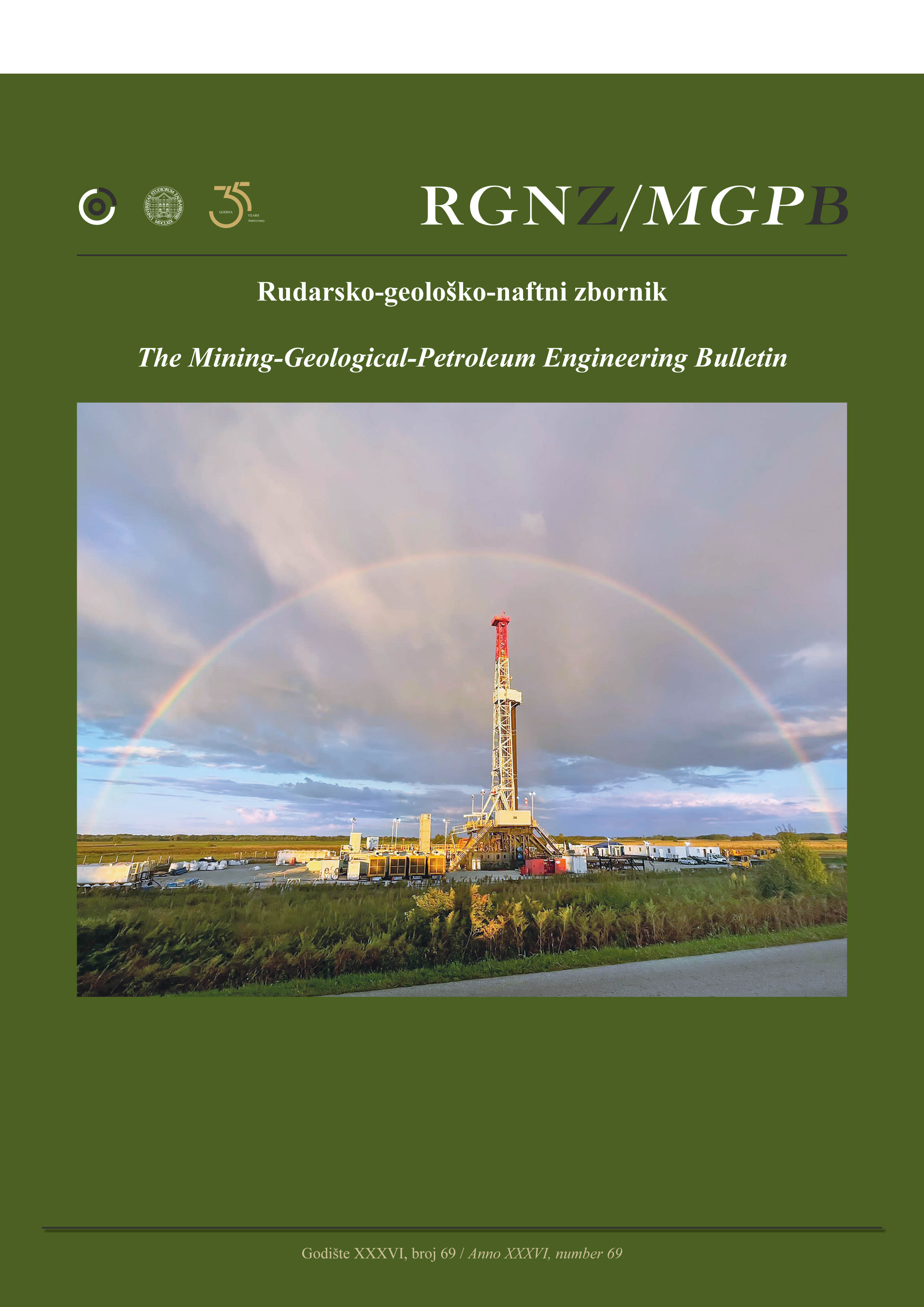Prediction of Rate of Penetration (ROP) in Petroleum Drilling Operations using Optimization Algorithms
DOI:
https://doi.org/10.17794/rgn.2024.3.9Keywords:
Rate of Penetration, Grey Wolf Optimization, Particle Swarm Optimization, Grasshopper Optimization Algorithm, drilling operationAbstract
In drilling operations, by choosing the proper tools and also incorporating more accurate and reliable parameters, this operation can be performed in less time and cost manner. Among drilling parameters, Rate of Penetration (ROP) is viewed as the main parameter in drilling operation evaluation. Field data investigations can be considered the most fruitful approaches to evaluate drilling performance, or ROP, as well as development of predictive models although laboratory tests and experimental formulas are vastly used to identify the drilling problems. In this research, intelligent modeling was used to predict the penetration rate of drilling operations through analyses of an established comprehensive data base from drilling operations in one of Iranian oilfields, Shadegan oilfield, in which novel artificial intelligence techniques such as Grey Wolf Optimization (GWO), Particle Swarm Optimization (PSO), and Grasshopper Optimization Algorithm (GOA) were applied. Since the database includes 400 data, these techniques were utilized due to their effectiveness on a large set of data. In this research, using drilling data compiled from Shadegan oilfield, a precise model was developed to predict the ROP. Results showed that determination coefficient (R2) and Root mean squared error (RMSE) parameters for Particle Swarm Optimization (PSO) are found to be as R2=0.977 and RMSE=0.036, for Grey Wolf Optimization (GWO) R2=0.996 and RMSE=0.014, for Grasshopper Optimization Algorithm (GOA) R2=0.999 and RMSE=0.003, respectively. Ultimately, it can be concluded that all predictive models lead to acceptable results but GOA yields more precise and realistic outcome.
Downloads
Published
How to Cite
Issue
Section
License
Copyright (c) 2024 Arash Ebrahimabadi, Alireza Afradi

This work is licensed under a Creative Commons Attribution 4.0 International License.
Creative Commons-BY
Authors who publish with this journal agree to the following terms:
In agreeing this form, you certify that:
- You read the ethical codex of the RGN zbornik available at journal web.
- You submitted work is your original work, and has not previously been published and does not include any form of plagiarism.
- You own copyright in the submitted work, and are therefore permitted to assign the licence to publish to RGN zbornik.
- Your submitted work contains no violation of any existing copyright or other third party right or any material of an obscene, libellous or otherwise unlawful nature.
- You have obtained permission for and acknowledged the source of any illustrations, diagrams or other material included in the work of which you are not the copyright owner.
- You have taken due care to ensure the accuracy of the work, and that, to the best of your knowledge, there are no false statements made within it.
- All co-authors of this submitted work are aware of, and in agreement with, the terms of this licence and that the submitted manuscript has been approved by these authors.
Publication licence
You retain copyright in your submitted work, according to journal license policy (CC-BY). By signing this form you agree that RGN zbornik may publish it under the publication licence. In summary the licence allows the following:
Anyone is free:
- To copy, distribute, display, and perform the work.
- To make derivative works.
Under the following conditions:
- The original author must always be given credit.
- The work may not be used for commercial purposes.
- If the work is altered, transformed, or built upon, the resulting work may only be distributed under a licence identical to this one.
Exceptions to the licence
In addition to publishing the work printed under the above licence, RGN zbornik will also enable the work to be visible online.
The journal editorial can change the licence rules anytime but it cannot retroactively restrict author(s) rights.


